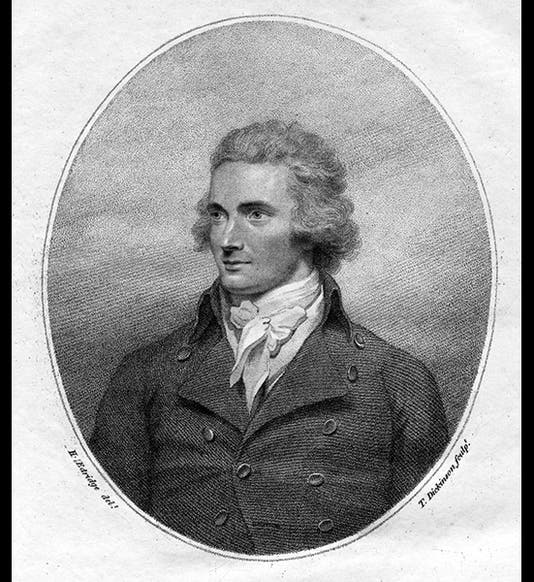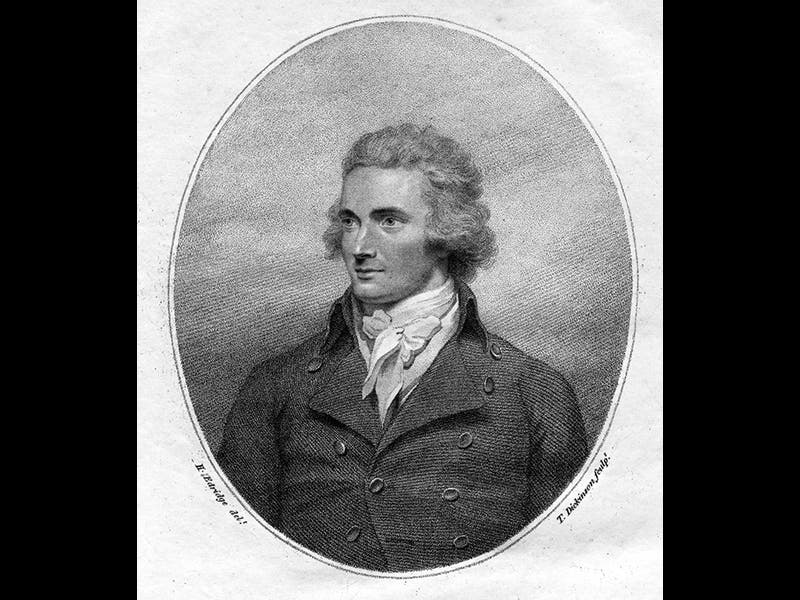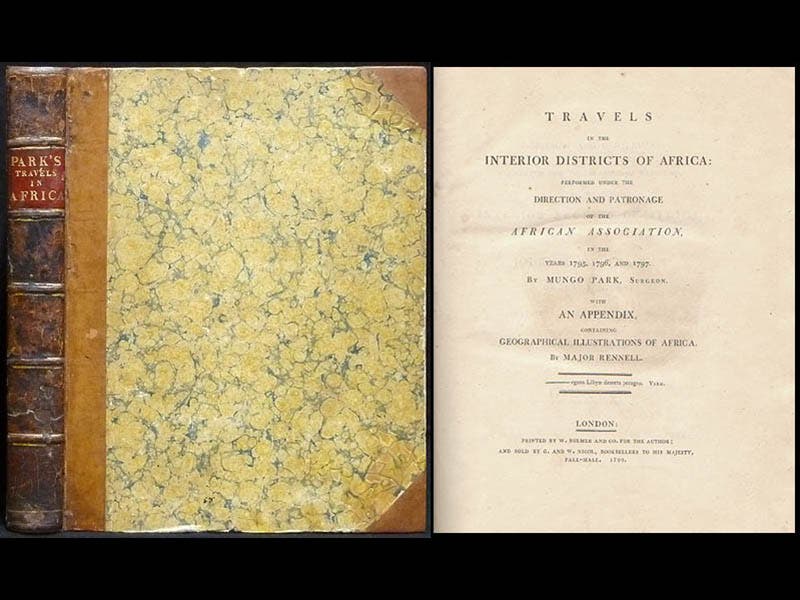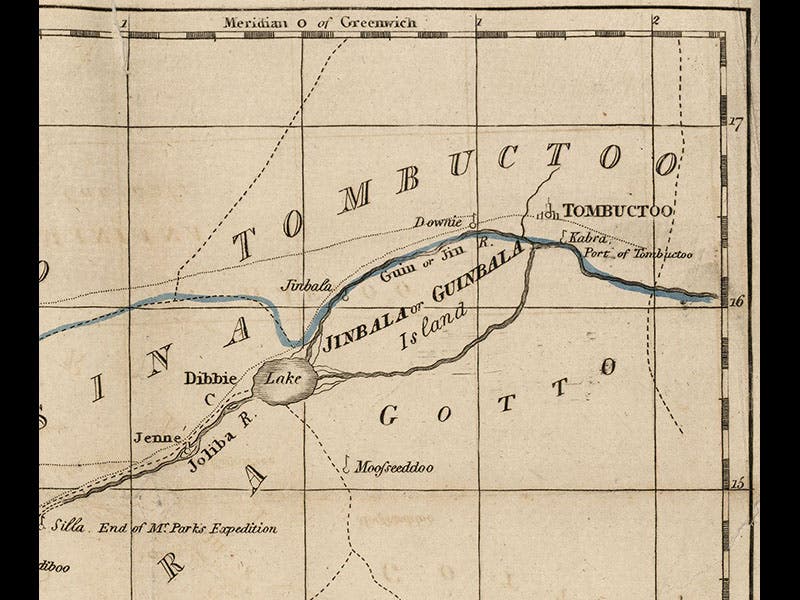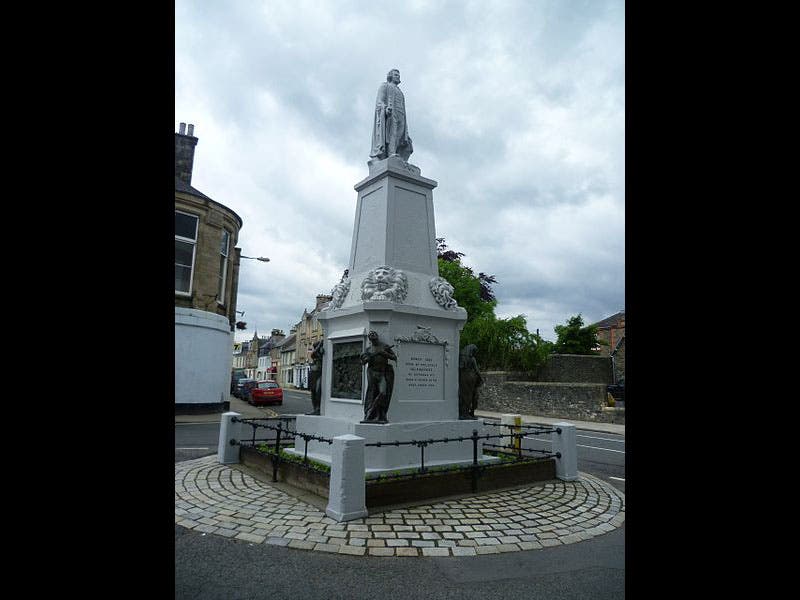Scientist of the Day - Mungo Park
Mungo Park, a Scottish surgeon and explorer, was born Sep. 11, 1771. In 1795, a new London organization, the African Association, selected Park to lead an expedition to penetrate to the Niger River from the coast of West Africa. Park’s sole qualification seems to have been that he applied for the post. The obstacles he faced were almost diabolical: tribal chiefs expecting tribute; Muslim merchants who would not tolerate European competition, thieves, disease, and heat. Amazingly, Park made it to the Niger, and explored along its shore for some distance, before he was forced to turn back. He survived the return trip and returned to London in 1797, somewhat of a hero--the first European to see the upper Niger.
He published a book of his adventures in 1799 that was well received (see second image above). The book contains a splendid map of northwest Africa (third image), and in a detail we can see the track of the expedition and the fabled Timbuctoo (fourth image). Park then married and returned home to Scotland to become a country surgeon. When he was asked in 1803 if he would lead a better-outfitted expedition back to the Niger, with hopes of navigating to its mouth, he eagerly agreed. The second expedition was a disaster; of the original party of 45, 38 died of fever before they even got to the Niger. Park headed down the river with the surviving 7 in a modified flat-bottom canoe. If the one surviving native witness was reliable, they made it 1000 miles downstream to Bussa, before Park and his men drowned trying to withstand an attack by natives on shore, probably in late 1805.
Park is a hero to his hometown of Selkirk, Scotland, and he was the beneficiary of one of the two imposing commemorative statues erected there (fifth image). The other belongs to Sir Walter Scott (sixth image). The portrait above (first image) served as the frontispiece to the Travels (1799), which we do not have in our collection.
Dr. William B. Ashworth, Jr., Consultant for the History of Science, Linda Hall Library and Associate Professor, Department of History, University of Missouri-Kansas City. Comments or corrections are welcome; please direct to ashworthw@umkc.edu.

